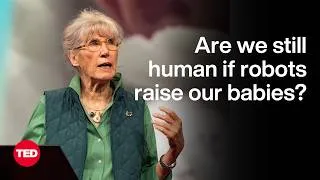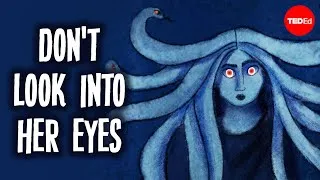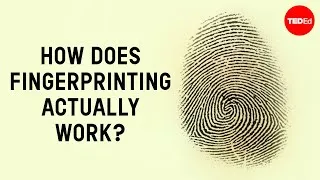请双击下面的英文字幕来播放视频。
翻译人员: dottie zhao
校对人员: Qinyang Zeng
回想一下经典的白色T恤。
00:07
Consider the classic white t-shirt.
0
7294
2689
00:09
Annually, we sell and buy
two billion t-shirts globally,
1
9983
4211
每年,全球会买卖20亿件T恤,
使其成为世界上
最常见的服装单品。
00:14
making it one of the most common
garments in the world.
2
14194
3289
00:17
But how and where is the average
t-shirt made,
3
17483
3391
不过T恤都是在哪里,
以及如何制作出来的,
00:20
and what's its environmental impact?
4
20874
3642
对环境又有怎样的影响呢?
00:24
Clothing items can vary a lot,
5
24516
1889
服装种类繁多,差别迥异,
00:26
but a typical t-shirt begins its life
on a farm in America, China, or India
6
26405
5200
但一件经典的T恤是在美国,
中国或印度的农场里诞生的。
00:31
where cotton seeds are sown, irrigated and
grown for the fluffy bolls they produce.
7
31605
7296
在那里,棉花的种子通过播种,灌溉
生长,生产出了蓬松的棉铃。
00:38
Self-driving machines carefully harvest
these puffs,
8
38901
3839
随后,自动收割机开始收割它们,
00:42
an industrial cotton gin mechanically
separates the fluffy bolls from the seeds,
9
42740
4685
工业棉机械设备
将这些蓬松的棉铃与种子分开,
00:47
and the cotton lint is pressed
into 225-kilogram bales.
10
47425
4720
并将棉绒压制成225公斤的棉包。
种植棉花需要大量的水和农药。
00:52
The cotton plants require a huge quantity
of water and pesticides.
11
52145
4712
00:56
2,700 liters of water are needed to produce
the average t-shirt,
12
56857
4739
生产每件T恤平均要消耗
2700公升的水,
01:01
enough to fill more than 30 bathtubs.
13
61596
3570
足以填满30多个浴缸。
同时,棉花的生长对
杀虫剂和农药的需求,
01:05
Meanwhile, cotton uses more insecticides
and pesticides
14
65166
3321
01:08
than any other crop in the world.
15
68487
2920
也远超世界上任何其他作物。
01:11
These pollutants can be carcinogenic,
16
71407
2239
这些污染物有致癌性,
01:13
harm the health of field workers,
17
73646
2244
会危害工作人员的健康,
01:15
and damage surrounding ecosystems.
18
75890
3597
并损害生态系统。
01:19
Some t-shirts are made of organic cotton
grown without pesticides and insecticides,
19
79487
4869
一些T恤由无农药和
杀虫剂的有机棉制成,
01:24
but organic cotton makes up less than 1%
20
84356
3221
但天然有机棉的产量少之又少,
01:27
of the 22.7 million metric tons
of cotton produced worldwide.
21
87577
6370
不到全球2270万吨
棉产量的百分之一。
01:33
Once the cotton bales leave the farm,
22
93947
2082
一旦棉包离开农场,
纺织厂就会将它们送到纺纱厂,
01:36
textile mills ship them
to a spinning facility,
23
96029
3049
这些工厂通常位于中国和印度,
01:39
usually in China or India,
24
99078
2611
01:41
where high-tech machines blend,
25
101689
2728
在那里,高科技机器进行混合,
01:44
card,
26
104417
1322
梳棉,
01:45
comb,
27
105739
1349
精梳,
01:47
pull,
28
107088
1371
拉扯,
01:48
stretch,
29
108459
1520
延伸等操作,
01:49
and, finally, twist the cotton into
snowy ropes of yarn called slivers.
30
109979
5859
最后,将棉花拧成白色的纱绳,
就是我们所说的银条。
01:55
Then, yarns are sent to the mill,
31
115838
1792
然后,纱绳送被到纺织作坊,
01:57
where huge circular knitting machines
32
117630
2169
在那里,大型的环形针织机
01:59
weave them into sheets
of rough grayish fabric
33
119799
3180
将它们编织成
粗糙的灰色织物,
02:02
treated with heat and chemicals
until they turn soft and white.
34
122979
5280
再经过高温和化学处理,
直到它们变白,质感柔软。
下一步,通过将织物浸入
漂白剂和染料,
02:08
Here, the fabric is dipped into
commercial bleaches and azo dyes,
35
128259
4310
02:12
which make up the vivid coloring
in about 70% of textiles.
36
132569
4491
可以将70%的纺织品
染成鲜艳的颜色。
然而,其中一些染料
会含有致癌的镉,
02:17
Unfortunately, some of these contain
cancer-causing cadmium,
37
137060
3670
02:20
lead,
38
140730
749
铅,
02:21
chromium,
39
141479
821
铬,
02:22
and mercury.
40
142300
1911
和汞元素。
02:24
Other harmful compounds and chemicals
can cause widespread contamination
41
144211
4000
其他有害化合物和化学品
会作为有毒废水
流入河流和海洋,造成严重的污染。
02:28
when released as toxic waste water
in rivers and oceans.
42
148211
5309
02:33
Technologies are now so advanced
in some countries
43
153520
2542
如今对于一些技术先进的国家,
在整个生产织物的过程中
02:36
that the entire process of growing
and producing fabric
44
156062
2649
02:38
barely touches a human hand.
45
158711
2552
几乎不需要手工操作。
02:41
But only up until this point.
46
161263
2711
但是仍有一点不足。
02:43
After the finished cloth
travels to factories,
47
163974
2448
在成品布料被送往工厂的路上,
02:46
often in Bangladesh, China, India,
or Turkey,
48
166422
3990
通常是在孟加拉国,中国,
印度,或土耳其等国家,
02:50
human labor is still required
to stitch them up into t-shirts,
49
170412
4659
仍需手工将它们缝合成T恤,
这种复杂的工作
机器根本做不了。
02:55
intricate work that
machines just can't do.
50
175071
3121
02:58
This process has its own problems.
51
178192
2649
这个过程本身也存在问题。
03:00
Bangladesh, for example,
52
180841
1561
例如,孟加拉国
03:02
which has surpassed China as the world's
biggest exporter of cotton t-shirts,
53
182402
4039
已经超越了中国,
成为最大的棉T恤出口国,
03:06
employs 4.5 million people
in the t-shirt industry,
54
186441
4871
在T恤行业雇用了450万人,
03:11
but they typically face poor conditions
and low wages.
55
191312
4840
但他们的工作环境恶劣,报酬极低。
制造环节完成后,所有这些T恤
通过船,火车和卡车被运往
03:16
After manufacture, all those t-shirts
travel by ship, train, and truck
56
196152
4520
03:20
to be sold in high-income countries,
57
200672
2520
高收入国家出售,
03:23
a process that gives cotton
an enormous carbon footprint.
58
203192
4111
这个运送过程给棉
留下了巨大的碳足迹。
03:27
Some countries produce
their own clothing domestically,
59
207303
2860
因此,一些国家选择
在自己的国家生产服装,
取消了这个污染阶段,
03:30
which cuts out this polluting stage,
60
210163
2400
03:32
but generally, apparel production accounts
for 10% of global carbon emissions.
61
212563
5690
但实际上,服装生产
占据了全球碳排放量的10%。
03:38
And it's escalating.
62
218253
1961
该数字仍然在急速攀升。
03:40
Cheaper garments and the public's
willingness to buy
63
220214
2970
大多数消费者喜欢
购买便宜的服装,
03:43
boosted global production
from 1994 to 2014 by 400%
64
223184
7290
使其全球产量从1994年
到2014年增加了400%,
03:50
to around 80 billion garments each year.
65
230474
4629
达到了年产量800亿件。
最后,在消费者的家中,
03:55
Finally, in a consumer's home,
66
235103
2051
03:57
the t-shirt goes through one of the most
resource-intensive phases of its lifetime.
67
237154
5510
T恤经历了其生命周期中
最耗费资源的过程。
04:02
In America, for instance,
68
242664
1531
例如,在美国,
04:04
the average household does nearly
400 loads of laundry per year
69
244195
4480
一般家庭每年
需要用400次洗衣机,
04:08
each using about 40 gallons of water.
70
248675
3549
每次需要消耗大约40加仑的水。
04:12
Washing machines and dryers
both use energy,
71
252224
2611
洗衣机和烘干机都要用到能源,
04:14
with dryers requiring five to six times
more than washers.
72
254835
5311
而烘干机的耗电量
是洗衣机的五到六倍。
在过去的20年,服装消费
发生了巨大的改变,
04:20
This dramatic shift in clothing
consumption over the last 20 years,
73
260146
3589
04:23
driven by large corporations
and the trend of fast fashion
74
263735
3983
大公司引领的快速时尚潮流
04:27
has cost the environment,
75
267718
2007
破坏了环境,
04:29
the health of farmers,
76
269725
1371
危害了农民的健康,
04:31
and driven questionable
human labor practices.
77
271096
3940
对劳动力的压榨更是饱受诟病。
04:35
It's also turned fashion into the second
largest polluter in the world after oil.
78
275036
5440
时尚业成了除了石油以外,
世界上最大的污染来源。
04:40
But there are things we can do.
79
280476
2354
但是,我们可以改变这一现状。
04:42
Consider shopping secondhand.
80
282830
2176
考虑购买二手衣物。
04:45
Try to look for textiles made from
recycled or organic fabrics.
81
285006
4229
试着寻找由回收或有机织物
制成的纺织品。
04:49
Wash clothes less and line dry
to save resources.
82
289235
4441
减少洗衣次数,自然晒干,
从而节约资源。
04:53
Instead of throwing them away
at the end of their life,
83
293676
2255
与其把它们扔掉
或者一直存放着,
04:55
donate, recycle, or reuse them
as cleaning rags.
84
295931
4136
不如进行捐赠,回收或再利用,
例如作为清洁抹布。
最后,你可能会问自己,
05:00
And, finally, you might ask yourself,
85
300067
2111
05:02
how many t-shirts and articles of clothing
will you consume over your lifetime,
86
302178
4079
在你的一生中,要消耗
多少件T恤和其他衣物,
05:06
and what will be their combined
impact on the world?
87
306257
3701
如果把它们加起来,
会对世界造成怎样的影响?
New videos
关于本网站
这个网站将向你介绍对学习英语有用的YouTube视频。你将看到来自世界各地的一流教师教授的英语课程。双击每个视频页面上显示的英文字幕,即可从那里播放视频。字幕会随着视频的播放而同步滚动。如果你有任何意见或要求,请使用此联系表与我们联系。







